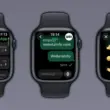Apple has been around for decades, but the company keeps pulling ahead of competitors in ways that go beyond just good marketing. There’s something deeper going on here. Apple has figured out a few things about technology that other companies still struggle with.
The same principles that make Apple devices work seamlessly together apply to the digital ecosystem today. As Bitcoin reaches new highs and Web3 expands rapidly, opportunities multiply across DeFi, blockchain gaming, and AI agents. This growth creates demand for secure platforms that protect user funds and maintain privacy while users explore Web3 ecosystems. A web3 wallet for dapps that supports over 1,000 cryptocurrencies without personal verification represents the type of tool that meets these evolving needs.
They Actually Make Hardware and Software Work Together
Most tech companies either make hardware or software, but not both. Apple does both, and that makes a huge difference. When you control the processor and the operating system, you can make them work together in ways that just aren’t possible otherwise.
Apple’s M1 and M2 chips show this perfectly. These aren’t generic processors – Apple built them specifically for Macs and iPhones. The numbers tell the story: an M1 chip uses 39 watts when working hard and just 7 watts during normal use. Compare that to Intel systems that burn through 20 watts while idle and 122 watts under load. Your battery lasts longer because Apple designed every piece to work together.
Building an Ecosystem That People Actually Want to Stay In
Apple’s ecosystem isn’t just about selling more devices. It works because it solves real problems. Start writing an email on your iPhone and finish it on your Mac without doing anything special. Your AirPods switch automatically between devices based on what you’re using.
Apple ID ties everything together with one login across all devices. Find My helps locate lost AirPods or track down your iPhone. iCloud keeps photos and documents in sync automatically. People buy more Apple products because using them together actually makes life easier, not because they’re forced to.
Design That Gets Out of Your Way
Apple spends a lot of time making things simple, but simple doesn’t mean basic. The company studies how people actually use technology, then builds products around those behaviors instead of forcing people to adapt to the technology.
Touch ID worked because Apple figured out that people wanted security without hassle. Face ID improved on that by being even faster. The iPhone’s home button disappeared when Apple found better ways to navigate. Each change happened because Apple watched what people struggled with and fixed it.
Apple products feel familiar even when they’re new because the company keeps the same design language across everything. Swipe gestures work the same way on an iPhone and iPad. The Control Center looks similar on your Mac and iPhone. You spend less time learning and more time doing.
Custom Chips That Actually Matter
When Apple started making its own processors, many people wondered if smartphone chips could really power laptops and desktops. Turns out they could, and better than anyone expected.
Apple silicon combines everything into one chip instead of spreading components around the computer. The processor, graphics, memory controller, and security features all live together. This makes everything faster and more efficient while building protection into the hardware itself with features that work before the operating system even loads.
Taking Time to Get Things Right
Apple rarely launches products first, but they often launch them best. The company waits until technology is ready and they can implement it properly.
Other companies rushed out tablets before the iPad, but they were basically small laptops with touchscreens. Apple waited until they could build something that worked like a tablet from the ground up. Same thing happened with smartwatches, wireless earbuds, and mixed reality headsets.
This approach requires patience and money. Apple keeps investing in research and development even when times get tough, while competitors cut back. That investment pays off when Apple releases products that work better than anything else available.
Making Technology That Lasts
Apple’s approach creates products that stay relevant longer than typical gadgets. iPhones get software updates for five or six years. Macs often last even longer. This isn’t just good for customers – it builds trust and loyalty.
Apple has also shifted from just selling hardware to selling services. iCloud storage, Apple Music, and other subscriptions bring in steady money while giving people more reasons to stick with Apple devices. The company’s focus on privacy and security becomes more important as people store more personal information on their devices.
Why This Approach Keeps Working
Technology moves fast, but some principles stay the same. People prefer devices that operate reliably, feel familiar, and do not require a manual. They want their gadgets to work together without the need for constant troubleshooting.
Apple discovered this early on and built their business around it so it focuses on the overall experience, while competitors prioritize specifications and features. Few businesses have both software and hardware that work together as well as Apple does. They don’t just build products; they build experiences that make technology feel natural instead of complicated.






